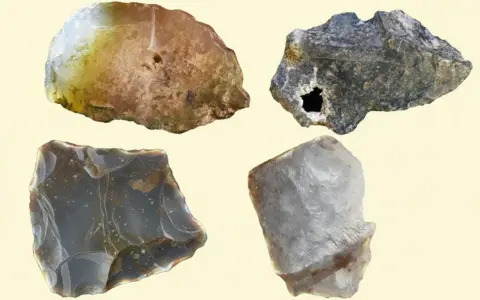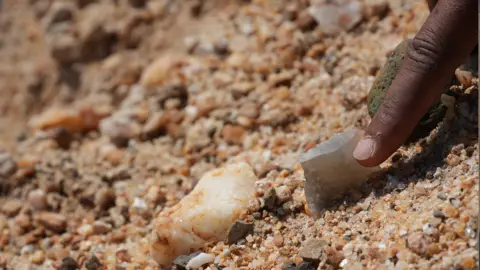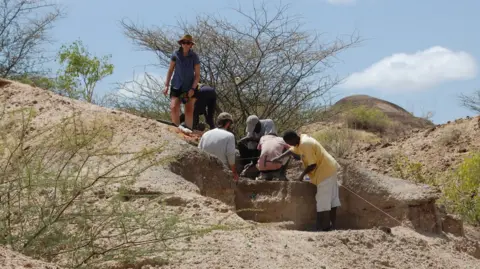Physical Address
304 North Cardinal St.
Dorchester Center, MA 02124
Physical Address
304 North Cardinal St.
Dorchester Center, MA 02124


Pallab GhoshTypical general
 David Brown
David BrownThe one who owned the baleli in the last year may have been Panalori, based on the discovery in the north-northwest.
Researchers have discovered that primitive humans lived 2.75 million years ago at an archaeological site that was used for 300,000 years.
It is further suggested that the initial use of the site was sporadic: randomly picked up and quickly forgotten.
Nitor Namiotukunan is the best to show that technology is inferior in thousands of generations of generations.
According to Prof. David Branda, from George Washington Proast University, in Nowingogout DC, who participated in the research, this discovery, it is strongly defined for human understanding.
“We thought that the tools could be a flash in the pan and then repeat. When we don’t see 300,000 years of the same thing, which has not been possible,” he said.
“This is a long process. The tools used in (humans and human ancestors) seem to be earlier and more important.”
 David Brown
David BrownArcheivology SPENT ten years in the tracking of 1,300 sharp formersitonic stones, and road stones, each made of rakesmic stone. This is done using a technology known as lama and it’s the first hidden device method.
The same variety of tools appear in three different layers. Deeper high on the back. Many real bone stones are specially selected for their quality, recommending that the puruna be treated and ng explain everything there is, according to gaus from goldo in Brazil.
“What we see here on the site is an incredible level,” he told BBC news.
“These guys are very good geologists. They know how to find the best raw materials and these stone tools are amazing, we can cut a finger to some of them with some fingers.”
Geological evidence suggests that the tools used probably helped these people survive changes in climate.
The landscape was transferred from a dry lushland barrel, hiding in a fire launsland and semidertert,” said Rahab N. Cinyanjui, senior Science in the national museum from Kenya.

These sharp Environmental changes will force animal populations to adapt through evolution or move. But the toolmakers in the region managed to thrive by using technology rather than biological adaptation, according to Dr. Palcu Rolier.
“The packaging technology of this early inhabitant of Turkey Edah who survived in the landscape in the broken fast – not by his customs, but adeslevel-way to find food.”
The evidence of different stone solutions shows that a long time ago, this primitive follow ended in the face of biological evolution, instead of waiting for biological results, looking for ways to control the world.
And this happened a lot more and more confidence emerged, according to DD Palcu Rolier.
“The use of tools means that they don’t have to evolve by changing their bodies to adapt to these changes. Instead, they develop the technology they do to gain access to animal carbon and dig up animal plants.”
 David Brown
David BrownThere is evidence for this on the site: the bones of the kabaya animal are broken, can be cut, cut with this stone tool, which means through this change, because the constant can use meat like this method of cutting.
“The technology that the military wants to use early, said DP Isolu Rolier.
“They can access the same type of food as the environment as the environment, resources whose skills are changing, but have new technology, they can widen this flexibility and Akas new food.”
 David Brown
David BrownAbout 2.75 million years ago, this area was invaded by some very early humans, who had rather small brains. These small humans may have lived alongside their evolutionary ancestors: A superior group, called Australopithicines, which had larger teeth and mixed with humans.
The users of the device at NAMOROTUPUMAN are most likely one of these groups or possibly both.
And find a challenge to the assumption held by many experts in the critical evolution of humans using tools that continue to use “2.4 and 24 million years ago.
“The argument we’re looking for is the largest brain size
“But what’s going on in the spotlight is these great early tools used before brain debt measures.”
“We’re probably going to have these early humans and human ancestors. We’re probably. We can actually trace the roots of the ability to create earlier or perhaps much earlier.” It seems earlier. “Maybe it’s better.” Probably more.